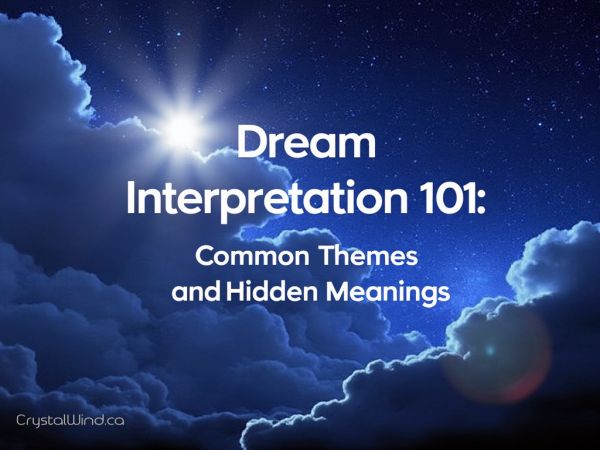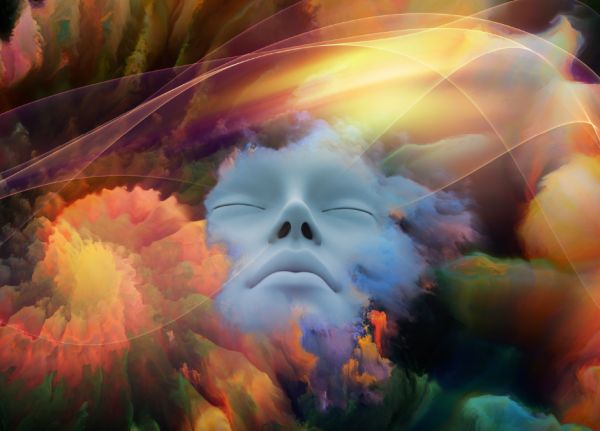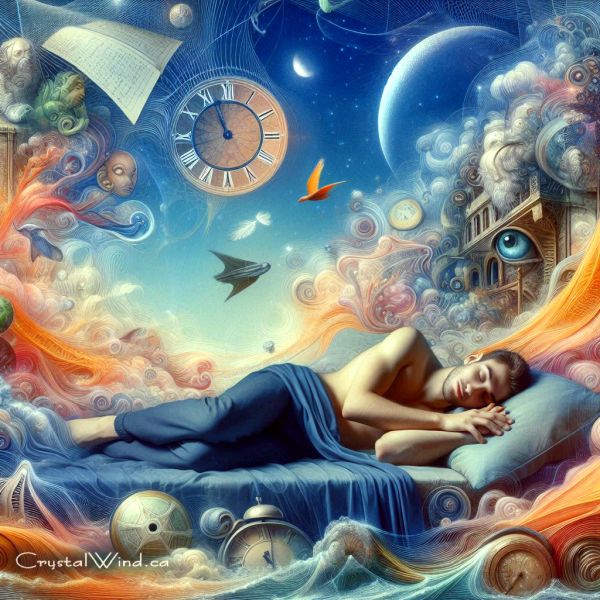Dream Interpretation 101: Common Themes and Hidden Meanings
- Details
- Written by Angela Levesque

Every night when we close our eyes our subconscious speaks to us. Dreams have served as a source of insight, inspiration, and sometimes even terror.
While some view dreams as random brain activity, others believe they carry profound symbolic messages and insights that help us along the way. Dream interpretation gives us a window into our subconscious mind and helps us open up a new avenue of understanding who we are and what we believe.
Why Do We Dream?
From ancient civilizations to modern psychologists, people have sought to understand why we dream. Some theories suggest that dreams serve essential physiological and evolutionary functions such as memory consolidation, problem-solving with abstract thought, and/or brain maintenance that results from the brain’s effort to make sense of the neural firing that occurs during REM sleep.
The Threat Simulation Theory contends that dreams might allow us to practice our responses to potentially threatening situations. Thereby helping us to refine our skills in a ‘practice’ environment. Similarly, dreams may also help us to process and regulate emotions. When we revisit challenging emotions in our dreams we can come to terms with the challenging feelings in a novel way or unthreatening way. Conversely, according to the continuity hypothesis, we might continue the emotional state from our waking life into our dreams. A classic example of this is an anxiety dream. We might have a lot of balls in the air in our real life and that might become a dream in which you have to give a speech and you realize you forgot your cue cards.
Sigmund Freud called dreams the ‘royal road’ to understanding our unconscious. Allowing us the opportunity to express ideas, thoughts, and feelings that are unacceptable to express in our waking lives. Believing that dreams were manifestations of repressed desire. Carl Jung had a different take on why we dream believing that all humans carry universal patterns from our collective unconscious called archetypes. These universal symbols show up in our dreamscape and guide us to greater levels of growth and self-awareness. This is why dreams are so symbolic as they hold hidden keys to our shadow as well as insights for our highest truth and potential.
Divine Messages
Ancient cultures took their dream interpretation seriously believing that dreams held divine messages. Often consulting priests and mystics to act as dream interpreters. In the Bible, for instance, dreams frequently appear as communication from God, carrying warnings or guidance for the dreamer. For example, Joseph, in the Book of Genesis, interpreted Pharaoh’s dreams foretelling years of plenty followed by famine. Prophetic dreams have persisted throughout history and remain influential in some spiritual traditions today. The more we work with our dreams, the easier it is to tease out the divine messages.
Symbolic Sight
Modern dream analysis began with the work of Sigmund Freud. In his book, The Interpretation of Dreams (1899), he introduced the concept of the latent content vs the manifest content of dreams. The latent content is the hidden, symbolic meaning of the dream. Representing the dreamer’s unconscious desires, fears, and conflicts that arise from repressed thoughts and emotions. The manifest content is the surface level of the storyline and events that the dreamer remembers upon waking.
For example, imagine someone dreaming of being chased by a lion through a forest. The manifest content is the remembered storyline of being chased by a lion in a forest. However, the latent content may be that the dreamer has a fear of facing a dominant figure in their life, such as a controlling boss or parent symbolized by the lion. The setting of the forest would represent a feeling of being lost or in the wild/unknown.
Carl Jung believed that dreams were not just expressions of individual desires but also reflections of universal themes or archetypes. So paying attention to reoccurring themes, symbols, settings, etc. as they are all windows into the parts of the psyche striving for integration. For Jung, dream interpretation was deeply personal; the meaning of a symbol depended on the dreamer’s experiences, culture, and emotions. For instance, while a snake might symbolize fear or danger for one person, it could represent transformation or healing for another.

How to Interpret Dreams
Dream interpretation is subjective and depends on the dreamer’s life circumstances and emotions. What might conjure up terror in one person might be exhilarating for another. So not only the external real-life circumstances matter, but also the emotional reaction in and out of the dream state.
The first suggestion for interpreting your dreams is to write them down upon waking. As soon as you wake up, write down everything you can think of. It is a race against time as most dreams become hard to recall within minutes of waking. Make sure to write down anything that comes to mind including the storyline but also any colors, emotions, items, or thoughts that come up. Over time, patterns and recurring themes will emerge.
The second suggestion is the pay attention to the emotions that come up during the dream. For example, you might roll down a hill. For some people, the trip down the hill might be terrifying as you hit rocks and thistles on the way down. Or it might feel exciting and childlike. There isn’t a right or a wrong way to feel about what is happening, only that the emotion should be seen as a clue to what is going on in our unconscious mind. It may be you are in a threatening situation but you don’t register it that way. Pay attention especially when the emotion in the dream does not match the circumstances.
Next, you want to identify any symbols or items that came up during the dream. Again, different symbols can mean different things to people. That is why identifying emotions is important. A tower to me might mean something different to you. As you recall the symbols pay attention to the color, the density, and/or other characteristics that the item or symbol possesses. You can use traditional meanings of symbols as a jumping-off point. But use your intuition and feelings to sense if that meaning resonates with you.
Next, look at what has come up and ask yourself if any of those symbols or feelings are mirrors of your waking life. I can’t tell you how many times I’ve dreamt of sitting in front of a mic supposed to be talking and nothing comes out. I can’t speak, I forgot what I was supposed to say and there is dead air. This is a common dream I have when I’m nervous or anxious about something happening in my waking life. So ask yourself, is there something going on that you’re trying to work through in the dream state? Is there an issue you’re avoiding or a message your subconscious is trying to convey about your real life experiences?
Working through these steps can go a long way in figuring out the messages of your dreams. You can always use a book or website (I love this one) as a jumping-off point. But, use your intuition and allow the sensations of your body to guide you. Ask yourself questions about the symbols and situations that arise in your dream and see how your body responds as you inquire about them.

Common Dream Themes and Their Meanings
Certain dream themes recur across cultures. Below are some common dreams and their potential interpretations:
- Falling: Often associated with feelings of insecurity, loss of control, or fear of failure in waking life.
- Being Chased: Reflects anxiety or avoidance of an issue. The chaser could symbolize fear, responsibility, or suppressed emotion.
- Flying: Frequently interpreted as a sign of freedom, ambition, or escaping limitations. Alternatively, it might indicate overconfidence or a need to regain grounding.
- Losing Teeth: Often linked to feelings of vulnerability, loss, or fear of aging and appearance.
- Being Naked in Public: Represents feelings of exposure, embarrassment, or vulnerability.
- Water: Symbolizes emotions and the subconscious. Calm water might indicate peace, while turbulent water suggests emotional turmoil.
- Death: Despite its unsettling nature, dreaming of death is rarely literal. It often signifies the end of a phase or the need for transformation.
Whether viewed as random neural firings, symbols of repressed desires, or pathways to self-understanding, dreams remain a compelling part of the human experience. By examining our dreams, we can uncover insights into our inner world, gain clarity on life’s challenges, and connect with the deeper layers of our psyche looking for integration. Ultimately, dream interpretation is less about finding definitive answers and more gleaning insight into our unconscious mind.
Reprinted exclusively on crystalwind.ca with written permission from Angela Levesque.
Images by CrystalWind.ca
Posting on CrystalWind.ca ©2024. All rights reserved. Please do not reproduce any content without written permission.
Latest Articles
Dive into the Mystical World of the Crystal Wind Oracle Deck!
Get All the Enchanting Details Now!
NEW Expanded Boxed Edition!
Now with 58 Cards for Richer Wisdom!
Imagine a world of inspiration and healing, free for all—made possible by YOU!
Donate Now—Ignite the Magic at CrystalWind.ca!

Epilepsy - Finding A Cure
Your donation can make a difference!
Help us find a cure – donate now!
Unlock Your Light: Join Lightworkers Worldwide on CrystalWind.ca!
Quake Watch
Follow Us!
Who is Online Now
We have 49772 guests and no members online
Featured This Month
Frogs Return Moon
Beaver – Chrysocolla - Blue Camas – Blue April 20 – May 20 The Frogs Retur... Read more
Taurus Mythology
The Taurus Myth The story of Taurus is most vividly tied to the tale of Zeu... Read more
The Seven Chakras and their Meanings
If you could imagine chakras as circles of energy, flowing all the way throu... Read more
Cartomancy - Fortune Telling Using Playing C…
Cartomancy is the act of divining using cards. Divining means to find out by... Read more
Bright Beltane Blessings!
The wheel turns to Beltane, also known as Mayday, marking the beginning of S... Read more
The Time of No Time: Beltane!
Around the medicine wheel of life we go, from season to season (solstice to ... Read more
The Crystal Wind Oracle Card Deck
The Crystal Wind Oracle™ The Crystal Wind Oracle Myth & Magic Card D... Read more
Sun in Taurus
Sun in Taurus April 21 through May 21 An Overview of Sun Sign Characteristi... Read more













































